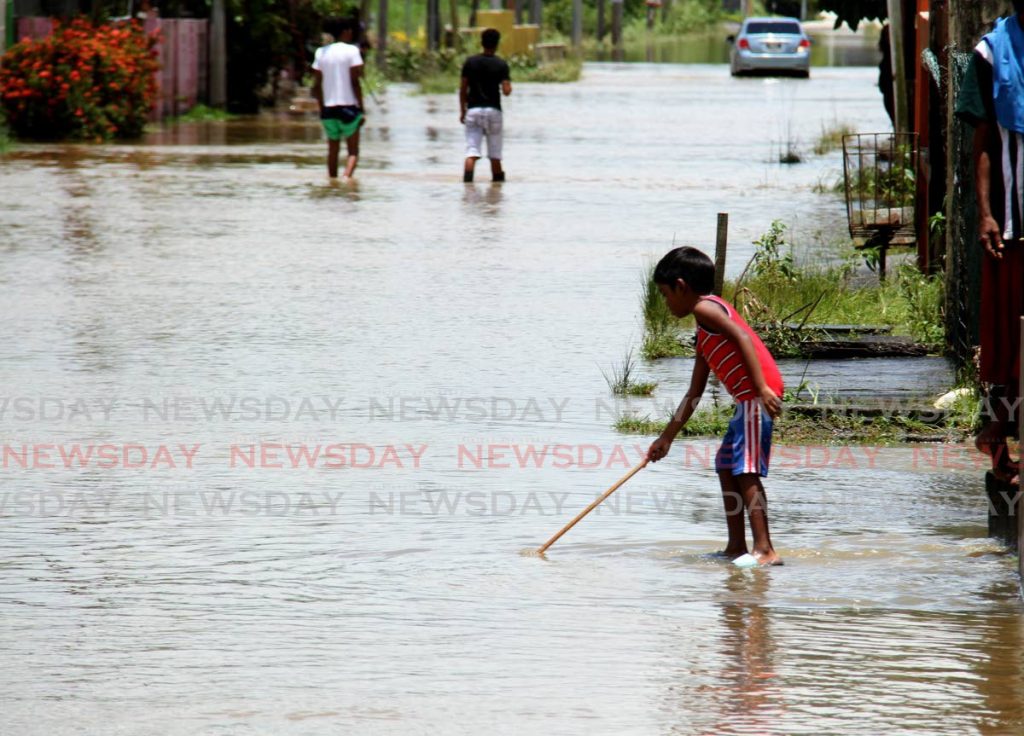Experts: Grim climate change outlook for Caribbean

The Caribbean region has been warming more than the global average, according to Secretary-General of the World Meteorological Organisation Prof Petteri Taalas.
He was speaking at the second day of Amcham’s 25th HSSE virtual conference and exhibition themed Learn, Evolve, Thrive on Tuesday. The panel discussion on climate change also included the United Nations (UN) global coordinator of universities consortiums for small island states, Dr Kalim Shah, and head of multi-lateral environmental agreements at the Ministry of Planning and Development Kishan Kumarsingh.
Taalas was speaking ahead of the COP26 summit which opens on October 31 and will end on November 12 in Glasgow, Scotland and the United Kingdom. He said the region is at risk of tropical storms, drought, rising sea levels and warming of seawater which affects ecosystems.
The UN Conference of Parties (COP26) will look at the achievements and accelerated actions towards the goals of the Paris Agreement and the UN Framework Convention on Climate Change (UNFCCC).
The goal set in 2015 with the Paris Agreement was to limit global limiting global warming to well below two degrees Celsius while pursuing efforts to limit it to 1.5 degrees Celsius.
TT ratified the Paris Agreement on climate change on February 22, 2018 at the United Nations’ headquarters in New York.
Taalas said the past five years have been the warmest recorded which has had significant impact on the Caribbean and other small island developing states (SIDS).
“The drop in carbon dioxide emissions of 5.6 per cent was temporary, and preliminary estimates from January-July 2021 showed global emissions in many sectors were already at the same or higher than in the same period in 2019.
“Out of the greenhouse gases, carbon dioxide has been responsible for two-thirds of the warming so far, methane about one-sixth and nitrate oxide about seven per cent. The difference between carbon dioxide and methane is that carbon dioxide lasts in the atmosphere.”
Taalas said the sea levels were revised and have been estimated to increase three to seven meters more in the coming years.

Natural disasters, he added, has increased with flooding being the most common globally, followed by drought, storms and hyperactive hurricane seasons.
Taalas said population growth also posed threats, and people in Asia and Africa were the most vulnerable and especially challenged for water and food security.
“If the Paris Agreement exceed to three-degree Celsius warming is a major risk for food security as loss of crop yield is in most parts of the world. This is one of the biggest reasons why we need to do our most to reduce the emissions.
“At the moment, 85 per cent of energy used for electrical production, industrial and transport sector is based on coal, oil and gas and only 15 per cent is based on nuclear, hydro and renewables.”
Shah added that in order to combat climate change, the private sector needed to get involved to build resilience and assist with mitigation.
The public sector financing for climate change, he said, was not going to work by itself and the support of private sector can fill the gaps.
“The private sector needs to take a lead in finding strategic solutions and work with government to enact policy and not just be on the sidelines and take policy.
“The private sector has to protect its assets but it also has to step up as corporate citizens in the small societies that we live in in our island countries,” Shah said.
He said climate change is embedded in the economic system such as the energy sector, the food sector, and tourism sector.
“Loss and damage policies such as insurances to fill the gaps that can provide relief needs to be looked into; we need to have better capacity for better measurement and indicators for adaptation and resilience efforts; environmental and social governance which go beyond legal requirements and utilise volunteerism to reduce emissions and build resilience; carbon pricing/markets to reflect the true cost of production; and technology, innovation and science based targets should improve climate change resilience.”
He added that the government’s role was to ensure there was a support policy environment for the private sector by removing barriers to investment such as the availability of data, institutional arrangements for multi-sector adaptation and strengthening financial incentive; foster the enabling conditions like a climate change mandate that includes every sector; and the design of regulatory tools like tax incentives and feed-in tariffs.
Kumarsingh said there was bad news everywhere ranging from fires in California to flooding in China.
“Climate change is likely to disrupt socio-economic wellbeing, undermine sustainable development, thwart efforts of diversification.
“One of the things that is less spoken about is national security, so changes in livelihoods of coastal communities is likely to cause internal migration when their natural resources are gone. This could also cause civil unrest and encourage illegal activities for survival,” Kumarsingh said.
He said the impact on the mental health was another risk to the population.


Comments
"Experts: Grim climate change outlook for Caribbean"